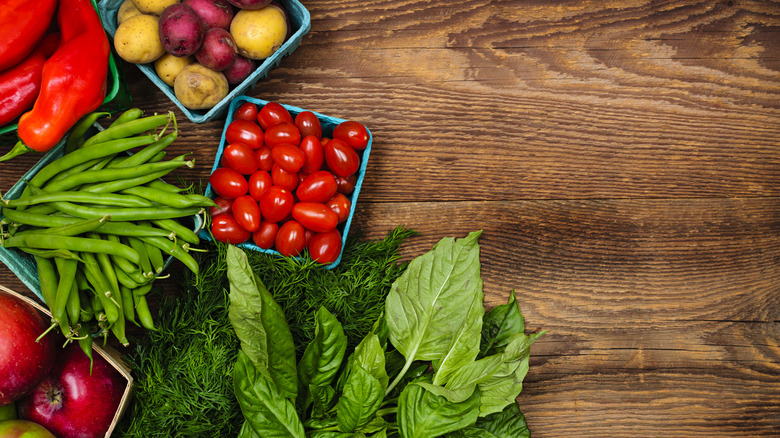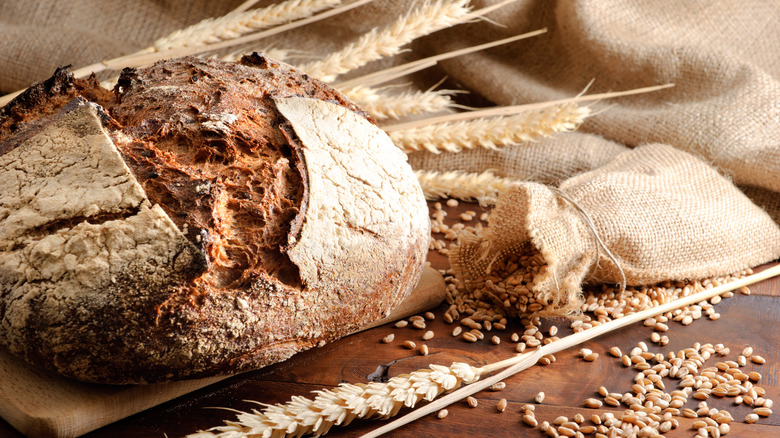Why Your Organic Food May Not Actually Be Fully Organic
Stroll through the produce section of just about any grocery store in the United States and you'll likely see organic and conventional foods stacked side by side. Broccoli, cucumbers, apples, and oranges. To the naked eye, they look almost exactly alike, except for one thing — price. Studies show a significant, and growing, segment of the population is willing to pay a premium for organic foods. According to Statista, a 2018 study revealed 41% of older millennials surveyed were willing to pay extra for organic or natural products. The flipside, according to an article published in the National Institutes for Health's National Library of Medicine, is that consumers who opt for organic foods do so based on a general acceptance that it's healthier, purer, more natural, or more nutritious. A significant portion of consumers who expressed a preference for organic foods, though, don't have a clear understanding of what does — and does not — go into producing organic foods (via Consumer Reports).
For the record, the U.S. Department of Agriculture regulates standards for organic foods. According to the USDA, to qualify for certified organic status, producers must adhere to rules governing soil quality, animal raising, pest control, and the use of additives. Certified organic food must be grown on soil free from prohibited substances like manufactured fertilizers and pesticides for at least three years. Similar regulations apply to the production of organic meat with additional stipulations regarding what the animals eat (organic feed only) and their living conditions (mandated outdoor access), according to Food & Water Watch.
Here's where it gets murky
In addition to produce and meat, the USDA also regulates production standards for organic processed foods; multi-ingredient foods like baked goods, cereals, and cheese. In general, certified organic processed foods cannot contain any artificial preservatives, coloring, or flavoring and production must not involve practices like irradiation or genetic engineering. According to Consumer Reports, foods that meet those strict criteria qualify for the USDA Organic seal and will be labeled 100% organic. Then it gets a bit more complicated.
For example, there's a difference between 100% organic and organic. According to Global Organics, foods may be labeled organic and bear the USDA Organic seal as long as they are produced using only approved methods and contain no more than 5% non-organic ingredients. Then there's the "made with" organic ingredients label. To qualify, foods must be at least 70% organic and the production of non-organic ingredients must not involve prohibited practices.
It's complicated, but understanding the labels and setting priorities can lead to good choices. According to Consumer Reports, 73% of Americans surveyed buy organic food with 62% routinely choosing organic produce. About a third of those surveyed said they opt for organic eggs, 35% choose organic meat and poultry, and 32% buy organic dairy products. The responses fall in line with the hierarchy Consumer Reports recommends when it comes to choosing organic over conventional foods.

